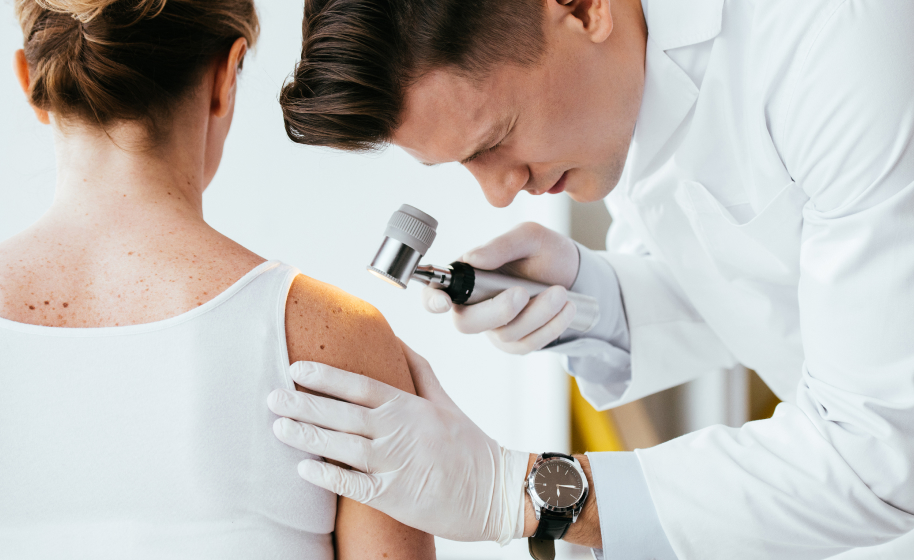Get a check-up for potential skin cancer with early detection and professional treatment options.
Get a check-up for potential skin cancer with early detection and professional treatment options.
Blog Article
Checking Out the most up to date Advancements in Dermatology: Mohs Techniques for Effective Skin Cancer Cells Therapy
In the developing landscape of dermatology, Mohs surgical procedure has actually emerged as a groundbreaking approach in treating skin cancer cells. This technique, understood for its precision and efficacy, has changed the domain, providing a beacon of hope for individuals with basic and squamous cell cancers. As we unbox the ins and outs of this procedure and its side over conventional therapies, one can not aid yet consider the transformative possible Mohs surgery holds for the future of skin cancer treatment.
Comprehending the Fundamentals of Mohs Surgical Procedure
A substantial number of people worldwide are significantly turning to Mohs surgical treatment for skin cancer cells therapy. This specialized surgical technique, called after its leader Dr. Frederic Mohs, is mainly used to deal with the most usual kinds of skin cancer: basic and squamous cell cancers. The procedure involves the elimination of slim layers of cancer-containing skin, which are after that thoroughly taken a look at to make sure that all cancerous cells have been eliminated. This precision enables the preservation of as much healthy tissue as feasible, decreasing the risk of disfigurement. The effectiveness of Mohs surgical procedure is amazing, boasting the highest success rate among treatments for skin cancer cells, with a reported five-year cure price of as much as 99% for brand-new cancers.
The Introducing Duty of Mohs Surgical Treatment in Dealing With Skin Cancer Cells
Regardless of the myriad of skin cancer therapies readily available today, Mohs surgery holds a distinct introducing role. Created by Dr. Frederic Mohs in the 1930s, this procedure has transformed the field of dermatology by offering the highest treatment rate for skin cancer people. Its accuracy and efficiency in eliminating cancerous cells while protecting healthy cells is exceptional. Mohs surgical procedure is especially efficient in treating hostile and persisting cancers, making it a favored option for skin cancers situated in cosmetically delicate or functionally vital areas. Its pioneering duty transcends beyond its efficiency, affecting how skin specialists comprehend and approach skin cancer. This micrographic surgical procedure has actually set a new criterion in skin cancer cells treatment, promoting survival and lifestyle for clients worldwide.

The Procedure: A Step-by-Step Breakdown of Mohs Surgical Treatment
Undergoing Mohs surgical treatment includes a careful, step-by-step procedure created to get rid of skin cancer while protecting healthy cells. Each layer is meticulously analyzed under a microscope to examine for cancer cells. Unlike conventional approaches, Mohs surgical treatment allows the cosmetic surgeon to precisely figure out when the cancer has been completely gotten rid of, lowering the need for added therapy.
Key Benefits of Opting for Mohs Surgical Treatment: Efficacy and Precision

Mohs Surgery vs. Standard Skin Cancer cells Treatments: A Comparative Evaluation
The comparative analysis between Mohs surgical procedure and traditional skin cancer cells treatments demands an extensive understanding of both methods. The initial part of the exam will certainly decode the process of Mohs surgery, complied with by an exploration of traditional treatments. The last facet of the comparison will concentrate on the efficiency of each approach, offering a clear contrast between Mohs and standard therapies.
Comprehending Traditional Therapies
Patients fighting skin cancer typically challenge a bewildering range of treatment choices. Topical chemotherapy involves applying a lotion or gel directly onto the skin cancer. The choice of treatment demands a cautious equilibrium in between getting rid of the cancer cells extensively and protecting as much Continue healthy and balanced skin as possible.
Decoding Mohs Surgery
One such innovation is Mohs surgical procedure, a specialized procedure that stands out in treating certain types of skin cancer. Unlike typical treatments that usually get rid of additional healthy skin around the tumor, Mohs surgery is an exact strategy that includes eliminating skin cancer layer by layer while analyzing each layer under a microscope up until no cancer cells continue to be. Mohs surgical treatment is not suitable for all skin cancers and patient conditions, therefore demanding a mindful evaluation by dermatologists.
Effectiveness Contrast: Mohs vs. Typical
While both Mohs surgical address procedure and typical skin cancer treatments have their benefits, a comparative analysis discloses distinct differences in efficiency. The Mohs method, including the removal of one skin layer at a time, has shown higher remedy prices for both key and frequent skin cancers. Individual suitability, cancer cells type, and place significantly affect therapy end results.
Embracing the Future: The Growing Fostering of Mohs Surgical Procedure in Dermatology
This growing fostering is associated to the treatment's high cure prices, specifically for basal cell cancer and squamous cell cancer, the most typical kinds of skin cancer cells. Mohs surgical procedure uses the advantage of protecting a lot more healthy and balanced tissue than conventional techniques, making it a preferred choice for dealing with cancers cells in cosmetically sensitive areas. Despite this, the future of dermatology seems to be embracing Mohs surgical treatment as a key tool against skin cancer.
Verdict
In recap, the innovations in Mohs surgical treatment strategies have transformed skin cancer therapy in dermatology. The treatment's accuracy in removing cancerous skin layers while conserving healthy and balanced cells has confirmed its efficiency, causing high treatment rates and low recurrence. Given its supremacy over traditional methods, the adoption of Mohs surgery is anticipated to expand, positioning it as the future of efficient skin cancer therapy.
Report this page